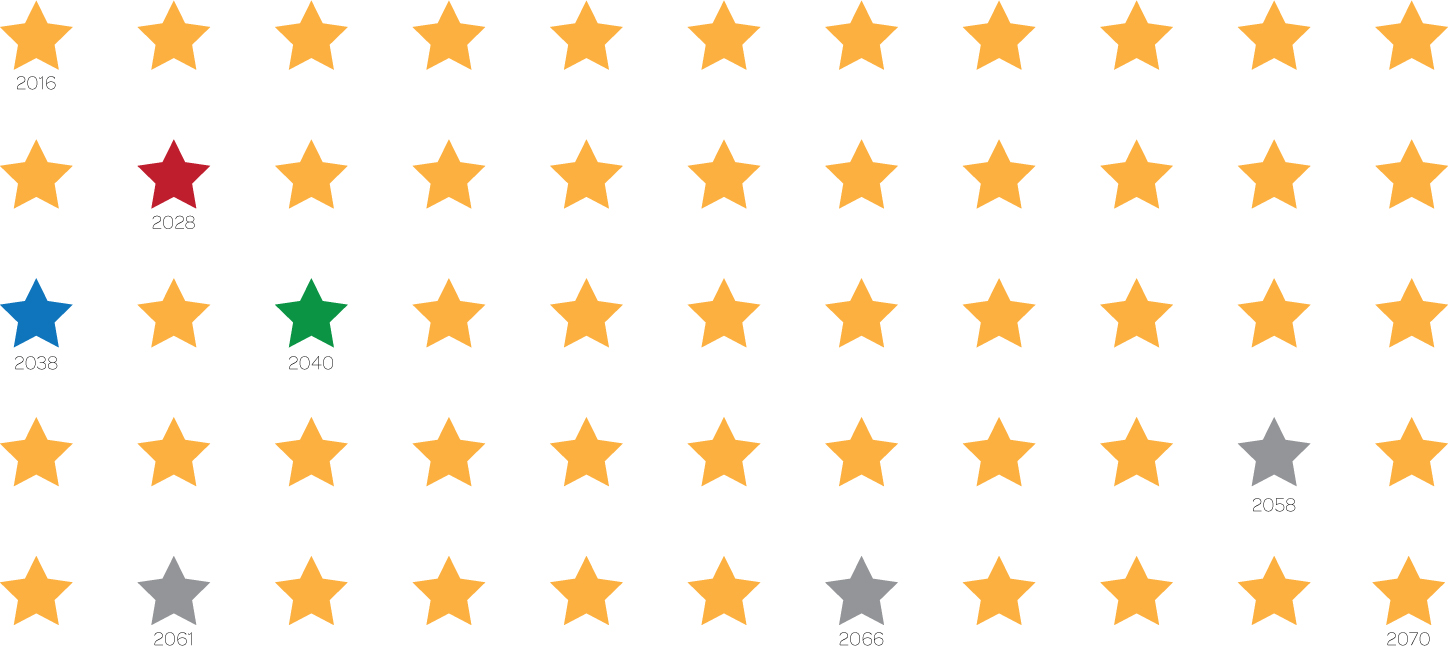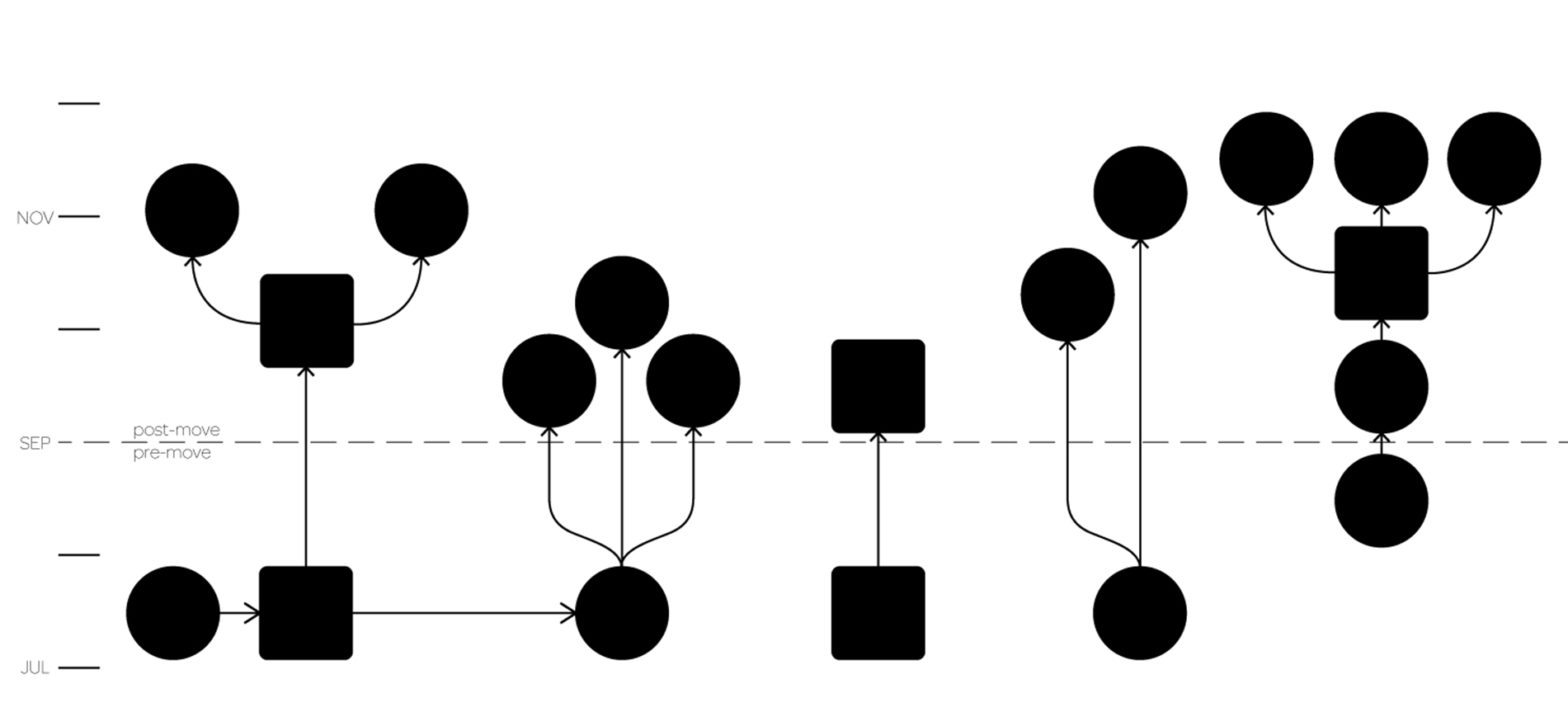What remains
Visualisations can be extremely powerful. I vividly remember reading this Wait But Why post, appreciating how it cut through the noise and compelled me to evaluate priorities. When they revisited the topic a few weeks back it struck a cord, generating a lot of discussion among my network. As a result I decided to make my own version of the visual, focusing only on the time I might have left (acknowledging that each of the moments is a gift and certainly in no way guaranteed). The resulting graphic is above and highlighted stars are explained below. 2028: The year I’ll be 48, the same age my father was when he passed away 2038: The year my mother turns 90 2040: Providing I reach my 90th year, I will still have 1/3 of my life to look forward to 2058, 2061, 2066: My age will be the same as the average life expectancy of a US, UK and HK female (respectively) 2070: My 90th year Seeing the quantity of years laid out in this manner can be startling. There are an infinite number of estimates you …









